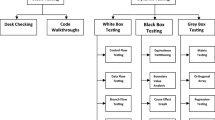Abstract
Within the semiconductor manufacturing chain the automated testing steps are coming increasingly into focus. Delivering enhanced functionality per IC is expected, with the costs per die being reduced, while, at the same time, the costs of semiconductor electrical tests increase disproportionately. In addition, the requirements for quality are significantly growing, in general, and in particular, being ensured by automated testing. Hence, the execution of test development and test method quality are becoming an important, competitive-advantage topic. This paper presents a case study that evidences such advantage by adopting software engineering methodologies in test program generation. A software cost model applied to test program development parameters, assessed in combination with Bayesian analysis and Gaussian statistical methods, is discussed in detail. Furthermore, the results obtained indicate the effectiveness of the proposed approach, evidencing a remarkable effort reduction, and address quality robustness in semiconductor test engineering.




Similar content being viewed by others
References
AIAG (1991/2002) Measurements Systems Analysis & reference manual, Automotive Industry Action Group AIAG, continuous publications, viewed May 2013, < http://www.aiag.org>
Berger JO, Wolpert RL (1998) The likelihood principle, 2nd edn. Institute of Mathematical Statistics, Hayward
Boehm B, Chulani S, Verner J, Wong B (2009) “Seventh workshop on Software Quality”, in 31st International Conference on Software Engineering - Companion Volume, Page(s): 449–450
Campbell M (2010) “Plenary presentations: Keynote: the product complexity and test - How product complexity impacts test industry”, Test Symposium (ETS), 2010 15th IEEE European, pp.9
Cavin RK, Lugli P, Zhirnov VV (2012) Prolog to the section on science and engineering beyond Moore’s law. Proc IEEE 100:1718–1719
Chulani S (2001) “Bayesian analysis of software cost and quality models”, in Proceedings Software Maintenance, in Proceedings IEEE International Conference on Software Maintenance, Page(s): 565–568
Claeys C (2012) “Trends and challenges in micro- and nanoelectronics for the next decade”, Mixed Design of Integrated Circuits and Systems, Proceedings of the 19th International Conference, pp. 37–42
Gertsbakh I (2003) “Measurement Theory for Engineers”, Springer-Verlag
Hartigan JA (1983) Bayes theory. Springer, New York
Huang JC, Jojic N (2010)” Maximum-likelihood learning of cumulative distribution functions on graphs“, in Proceedings of the 13th International Conference on Artificial Intelligence and Statistics (AISTATS), Volume 9 of JMLR: W&CP 9
Infineon (2013) Company home webpage, viewed April 2013, <http://www.infineon.com/cms/en/product/index.html
‘ITRS’ (2012) “International Technology Roadmap for Semiconductors 2009, Update 2012, viewed May 2013, <http://public.itrs.net/>
Jain M, Manjula T, Gulati TR (2011) “Software Reliability Growth Model (SRGM) with Imperfect Debugging, Fault Reduction Factor and Multiple Change-Point”, Proceedings of the International Conference on Soft Computing for Problem Solving (SocProS 2011) December 20–22, Springer
Jorgensen M, Shepperd M (2007) A systematic review of software development cost estimation studies. IEEE Trans Softw Eng 33(1):33–53
Journal of Electronic Testing (2012) “Special Issue on Testing of Three-Dimensional Stacked Integrated Circuits”, vol. 28, no. 1, February 2012
Kenney JF, Keeping ES (1951) Mathematics of statistics, 2nd edn. Van Nostrand, Princeton
Mack CA (2011) “Fifty Years of Moore’s Law”, Semiconductor manufacturing. IEEE Trans 24(2):202–207
Ross PE, Moore SK (2012) Top tech 2012. Spectrum IEEE 49(1):28–29. doi:10.1109/MSPEC.2012.6117829
Soong TT (2004) Fundamentals of probability and statistics for engineers. Wiley, Chichester
Vock S, Escalona O, Turner C, Owens F (2012) Challenges for semiconductor test engineering: a review paper. J Electron Testing Theory Appl 28(3):365–374
Vock S, Schmid M, von Staudt HM (2006) “Test Software Generation Productivity and Code Quality Improvement by applying Software Engineering Techniques”, in Proceedings International Test Conference 2006, Paper 1.4
Vock S, von Staudt HM (2006) “Mixed-Signal Test Software Generation Process – Open Environment, Software Engineering Methods and Tools for Improving Quality and Productivity”, Proceedings ISTFA 2006: 32nd International Symposium for Testing and Failure Analysis”, pp 172–177
Author information
Authors and Affiliations
Corresponding author
Additional information
Responsible Editor: Y. Zorian
Rights and permissions
About this article
Cite this article
Vock, S., Escalona, O., Turner, C. et al. The Use of Software Engineering Methods for Efficacious Test Program Creation: A Supportive Evidence Based Case Study. J Electron Test 30, 457–467 (2014). https://doi.org/10.1007/s10836-014-5462-8
Received:
Accepted:
Published:
Issue Date:
DOI: https://doi.org/10.1007/s10836-014-5462-8




